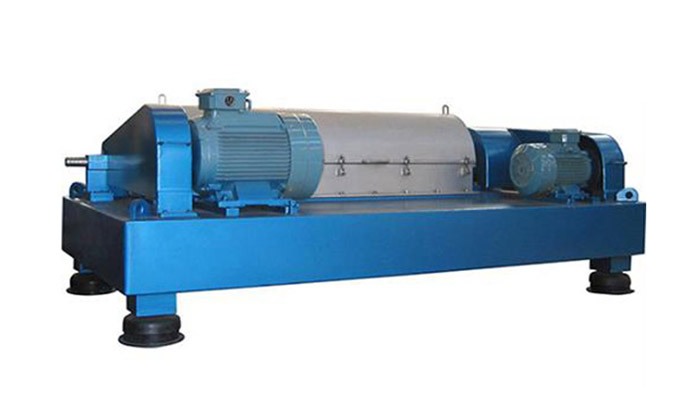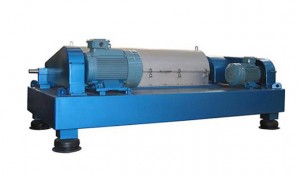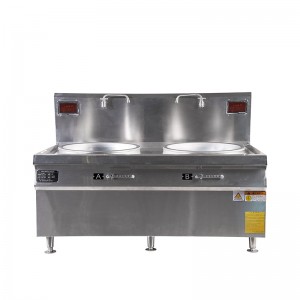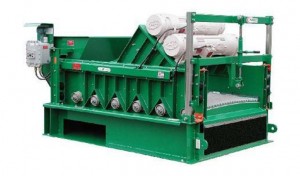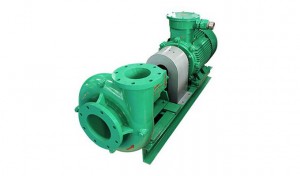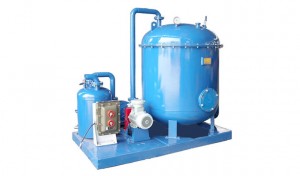
Innovative Decanter Centrifuge
Parameter
| Model | TY/LW600B-1 | TY/LW450N-1 | TY/LW450N-2 | TY/LW335N-1 | TY/LW335NB-1 |
| Drum Diameter | 600m | 450mm | 350mm | ||
| Drum Length | 1500mm | 1000mm | 1250mm | ||
| Drum Speed | 2200r/min | 3200r/min | 0~3200r/min | ||
| Processing Capacity | 90m/h | 50m/h | 40m/h | ||
| Separation Factor | 815 | 2035 | 0~2035 | ||
| Separation Point | 5~7μm | 2~5μm | 2~7μm | ||
| Differential Speed | 40r/min | 30r/min | 0~30r/min | ||
| Differential Speed Ratio | 35:1 | 57:1 | |||
| Main Motor Power | 55kw | 30kw | 37kw | 30kw | 37kw |
| Auxiliary Motor Power | 15kw | 7.5kw | 7.5kw | 7.5kw | 7.5kw |
| Weight | 4800kg | 2700kg | 3200kg | 2900kg | 3200kg |
| Size | 1900*1900*1750mm | 2600*1860*1750mm | 2600*1860*1750mm | 2600*1620*1750mm | 2600*1620*750mm |
Features
The centrifugal separator has two functions: centrifugal filtration and centrifugal sedimentation. Centrifugal filtration is the centrifugal pressure generated by the suspension in the centrifugal force field, which acts on the filter medium, so that the liquid passes through the filter medium and becomes the filtrate, while the solid particles are trapped on the surface of the filter medium to achieve liquid-solid separation; centrifugal sedimentation is used The principle that the components of the suspension (or emulsion) with different densities settle rapidly in the centrifugal force field to achieve liquid-solid (or liquid-liquid) separation.
Summary
There are many models and types of centrifuges, and the price is relatively expensive. When choosing and purchasing, it should be measured according to the work. Generally, the following factors should be considered:
(1) The purpose of centrifugation, whether to analyze or preparative centrifugation
(2) The type and quantity of the sample, whether it is a cell, a virus, or a protein, and the size of the sample amount. Based on these factors, decide whether to buy an analytical centrifuge or a preparation centrifuge; whether it is a low-speed, high-speed or over-speed; whether it is a large-capacity, constant-volume or micro-centrifuge.
(3) Economic ability: When the model is determined, the manufacturer and price should be considered. The price and the performance of the product are synchronized.
(4) Other details: such as whether the centrifugal operation is easy, whether maintenance is convenient, whether the design is outdated, whether the supply of wearing parts is convenient, etc.
Send your message to us:
-

Phone
-

E-mail
-

Whatsapp
-

Skype
-

Top
Send your message to us:
- English
- French
- German
- Portuguese
- Spanish
- Russian
- Japanese
- Korean
- Arabic
- Irish
- Greek
- Turkish
- Italian
- Danish
- Romanian
- Indonesian
- Czech
- Afrikaans
- Swedish
- Polish
- Basque
- Catalan
- Esperanto
- Hindi
- Lao
- Albanian
- Amharic
- Armenian
- Azerbaijani
- Belarusian
- Bengali
- Bosnian
- Bulgarian
- Cebuano
- Chichewa
- Corsican
- Croatian
- Dutch
- Estonian
- Filipino
- Finnish
- Frisian
- Galician
- Georgian
- Gujarati
- Haitian
- Hausa
- Hawaiian
- Hebrew
- Hmong
- Hungarian
- Icelandic
- Igbo
- Javanese
- Kannada
- Kazakh
- Khmer
- Kurdish
- Kyrgyz
- Latin
- Latvian
- Lithuanian
- Luxembou..
- Macedonian
- Malagasy
- Malay
- Malayalam
- Maltese
- Maori
- Marathi
- Mongolian
- Burmese
- Nepali
- Norwegian
- Pashto
- Persian
- Punjabi
- Serbian
- Sesotho
- Sinhala
- Slovak
- Slovenian
- Somali
- Samoan
- Scots Gaelic
- Shona
- Sindhi
- Sundanese
- Swahili
- Tajik
- Tamil
- Telugu
- Thai
- Ukrainian
- Urdu
- Uzbek
- Vietnamese
- Welsh
- Xhosa
- Yiddish
- Yoruba
- Zulu
- Kinyarwanda
- Tatar
- Oriya
- Turkmen
- Uyghur

